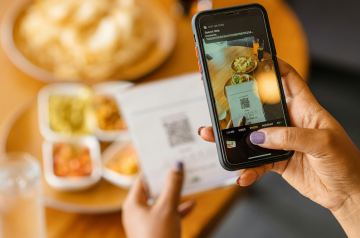
What is a ransomware attack? How to protect your files
Ransomware is a particularly devious kind of cyber attack that can infect your computer and hold your files hostage. Learn more here about how to defend yourself and your devices.
6 min read
If you haven’t heard of ransomware yet, then you’re lucky — you probably haven’t been the victim of an attack. This kind of malicious software can infect your computer and hold your files hostage until you pay a ransom to the attackers. That’s bad enough, but the negative consequences can be more than just financial.In this installment of our security series, we'll explore what a ransomware attack is, the danger it poses to your personal and professional files, and most importantly, how to protect yourself before anything happens. Read on!In a ransomware attack, a hacker gains access to your computer or network and encrypts your files, making them inaccessible. The attacker then demands payment, usually in cryptocurrency, in exchange for the decryption key to unlock your files. Ransomware attacks can be devastating — not only can important data be compromised or lost, businesses and individuals alike can also suffer significant damage to their finances and reputations.Ransomware attacks typically occur in a few distinct ways, such as:One of the most well-known ransomware attacks was called WannaCry and occurred in May 2017. The attack affected over 200,000 computers in 150 countries, including hospitals, businesses, and government agencies. The WannaCry ransomware exploited a vulnerability in Microsoft Windows operating systems, allowing it to spread rapidly across networks. Then, the ransomware encrypted the victims' files and demanded payment in Bitcoin in exchange for the decryption key. The attack caused widespread disruption and financial losses, especially because of its scale. For many people, this attack highlighted the importance of keeping software up-to-date and taking steps to defend against online threats like ransomware.WannaCry isn’t the only well-known ransomware attack — there have been several high-profile examples in recent years. Here are a few notable ones:To protect your files from ransomware attacks, it's essential to take the following steps:First, the bad news: Even if they receive the ransom payment, attackers might not provide the decryption key. Instead of paying, victims should report the ransomware attack to law enforcement in their area and seek help from a reputable cybersecurity professional. If you backed up your files, it may be possible to recover them or use specialized decryption tools on the encrypted versions — but there’s no guarantee. That's why it’s so important to take steps to prevent ransomware attacks in the first place.Antivirus software can help prevent ransomware attacks by detecting and blocking known ransomware threats. However, ransomware is constantly evolving. New variants may be able to get in and cause damage before they’re detected by antivirus software. Some antivirus software includes specific features designed to protect against ransomware, such as behavior-based detection and ransomware-specific protection. Choose a reputable antivirus software and keep it updated to ensure the best possible protection against ransomware and other types of malware. And even better: Use antivirus software together with the other security measures we mentioned earlier. At N26, we take security seriously. Since 2016, we’ve been operating with a full German banking license, which means that your funds are protected up to €100,000 by the German Deposit Protection Scheme. If you’re worried your card has been compromised or you spot a transaction on your account that you don’t remember making, our N26 Customer Support team is here to help, seven days a week. Simply get in touch through the chat function in your N26 app or the N26 WebApp. Want to learn more about staying safe online? Check out our online security guide for handy tips to protect yourself and your money from scams.
What is a ransomware attack?
How do ransomware attacks happen?
- Phishing emails designed to trick users into clicking on a link or downloading an attachment that contains the ransomware
- Malicious downloads that get installed when users visit unsecured websites or download software from untrusted sources
- Exploiting vulnerabilities in software or operating systems to gain access and install the ransomware
What is the most famous ransomware attack?
Notable ransomware attacks
- WannaCry: As we mentioned, the WannaCry attack in May 2017 affected over 200,000 computers in 150 countries.
- Petya/NotPetya: In June 2017, a version of the ransomware attacks known as Petya or NotPetya affected companies in Ukraine and quickly spread to other countries, including the United States. Although there are technical differences between Petrya and NotPetya, both strains are extremely disruptive and destructive.
- Ryuk: Ryuk ransomware has been used in several attacks against large organizations, including hospitals and municipalities. In the United States, the city of Baltimore was hit by a Ryuk attack in 2019 that disrupted city services and cost millions of dollars to recover from.
- Maze: This ransomware is known for its "double extortion" technique. With Maze, the attackers encrypt the victim's files, but also threaten to release sensitive data if the ransom isn’t paid. Maze has been used in attacks against companies in various industries, including healthcare and manufacturing.
How to prevent ransomware attacks?
- Keep your software up to date: Make sure that your operating system, antivirus software, and other applications are updated regularly to patch any security vulnerabilities.
- Use strong passwords: Use complex passwords that are difficult to guess and enable multi-factor authentication (preferably with an app and not a phone number, to protect against SIM card swap scams) whenever possible.
- Backup your files: Regularly backup your important files to an external hard drive or cloud storage service.
- Watch out for suspicious emails: Don't click on links or download attachments from unknown sources, as they may contain malware or scareware.
- Use antivirus software: Install reputable antivirus software and update it regularly.
- Stay informed: Educate yourself — and your employees, if you run a business or lead a team — on how to recognize and avoid ransomware attacks.
Can you remove ransomware? What to do if you get hacked
Can antivirus stop ransomware?
Security at N26
Find similar stories
BY N26Love your bank
Related Post
These might also interest youTECHNOLOGY & SECURITYWhy every day is April Fools’ Day for fraudstersToday’s scams look, sound, and feel real — until your money disappears. Here’s how to keep your finances safe.
5 min read
TECHNOLOGY & SECURITYHow scammers are using QR codes to steal your dataNot all QR codes are harmless. Here’s what to look out for to avoid falling for a “quishing” scam.
4 min read
TECHNOLOGY & SECURITY5 popular holiday scams to watch out for this seasonDon’t let scammers ruin your holidays. Get informed about these 5 popular holiday scams to protect your wallet.
5 min read


